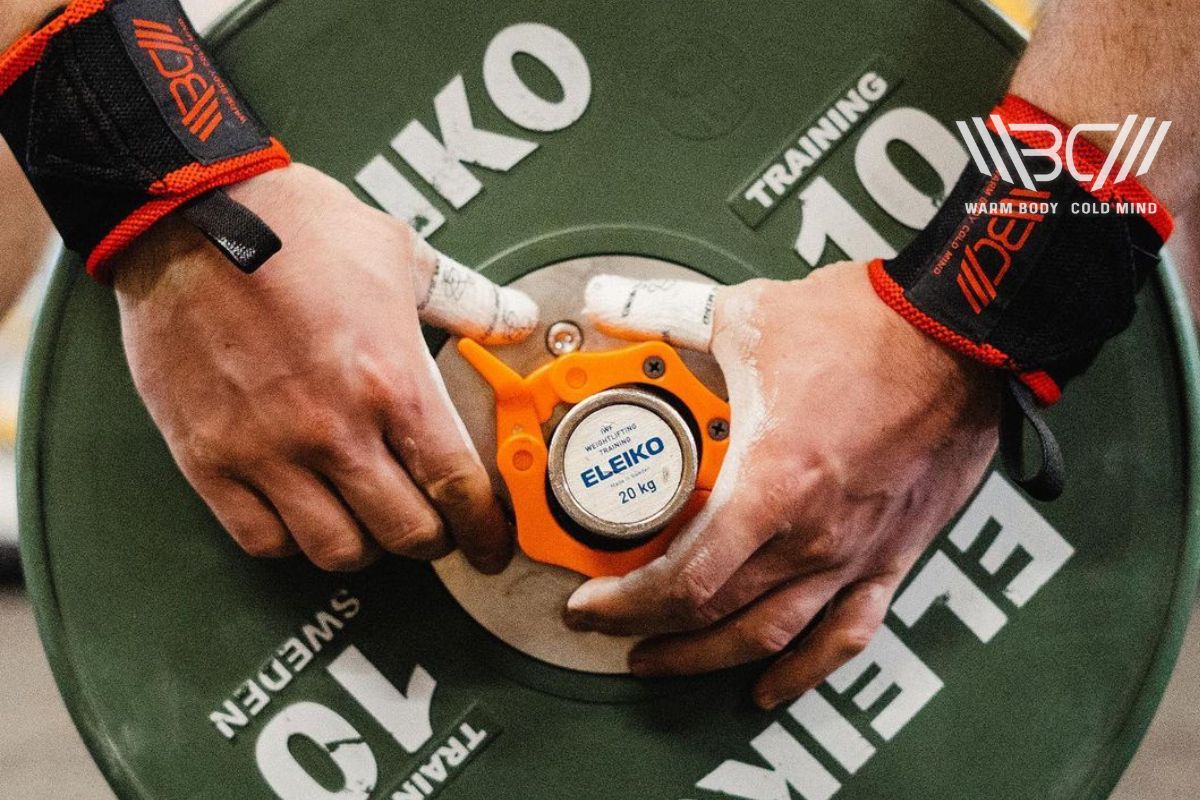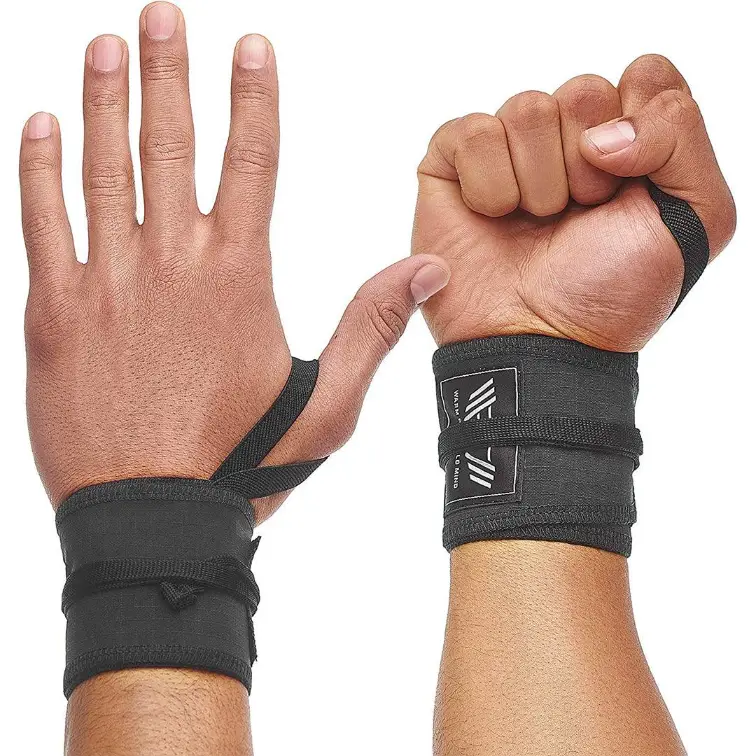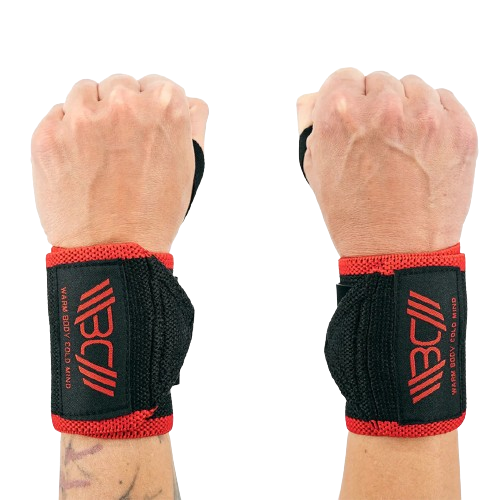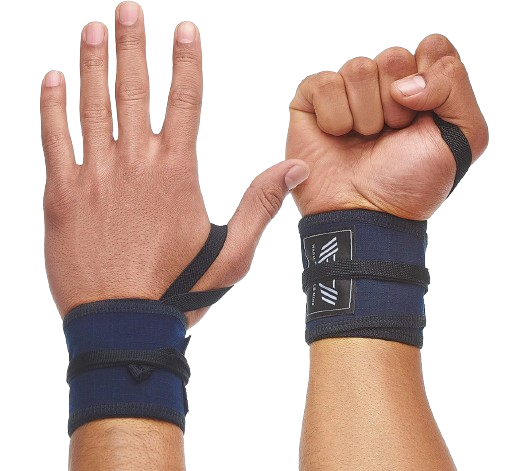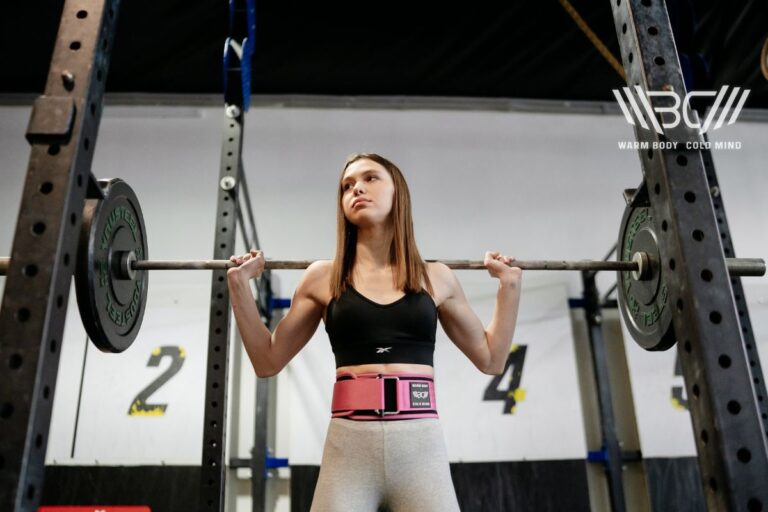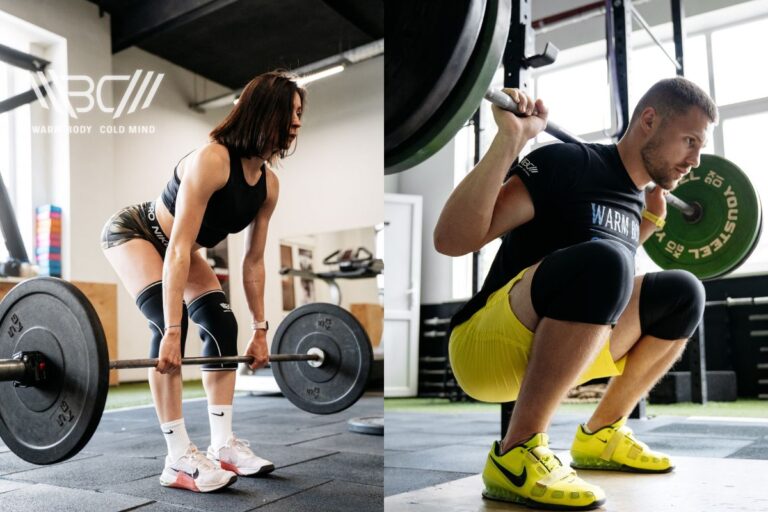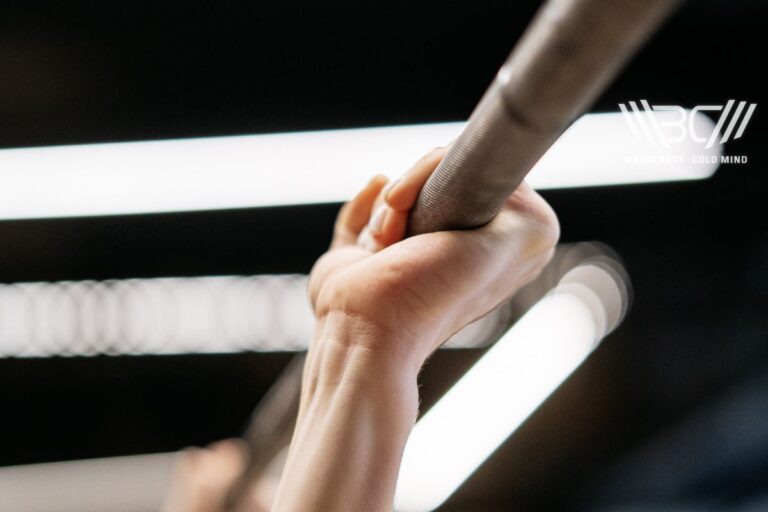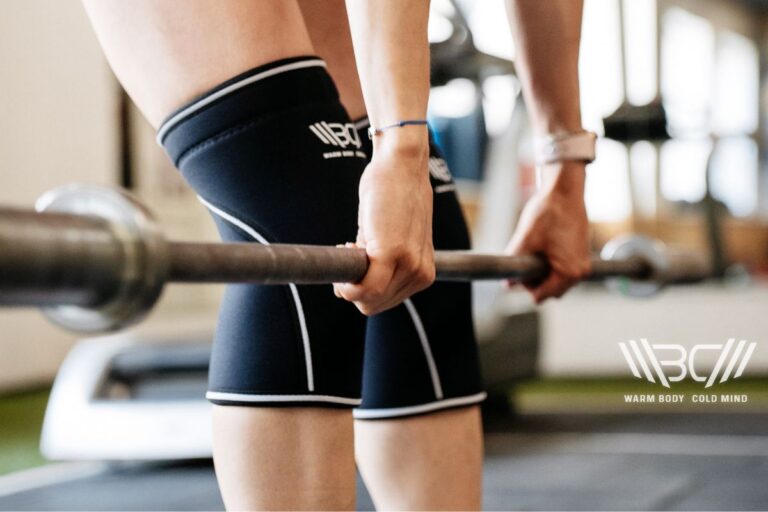Wrist Wraps For Deadlifts: Are They Worth It?
Wrist wraps can be a key piece of gym equipment if you want to hit big numbers but need additional wrist support. Wrist wraps for deadlifts have the potential to transform the way you train, and in this article, we’ll explore the benefits, do’s, and don’ts of bringing wrist wraps into your gym sessions.
Using additional equipment in the gym may not be for everyone, but what about using wrist wraps for deadlifts?
In addition to reducing pressure on the hands and wrists, using wrist wraps for deadlifts can help support you through significant lifts, and safely. It’s essential to use wrist wraps correctly, and if done so, you’ll likely see more progress on heavy load days, along with less wrist strain.
What Are Wrist Wraps?
Wrist wraps are typically made from a robust fabric such as cotton, leather, or nylon that wraps around the wrist, providing extra support and stability through a variety of movements. By essentially reinforcing your wrist, pressure is lifted from your hands and wrists, allowing your legs, back, and core to be the primary areas to support compound movements.
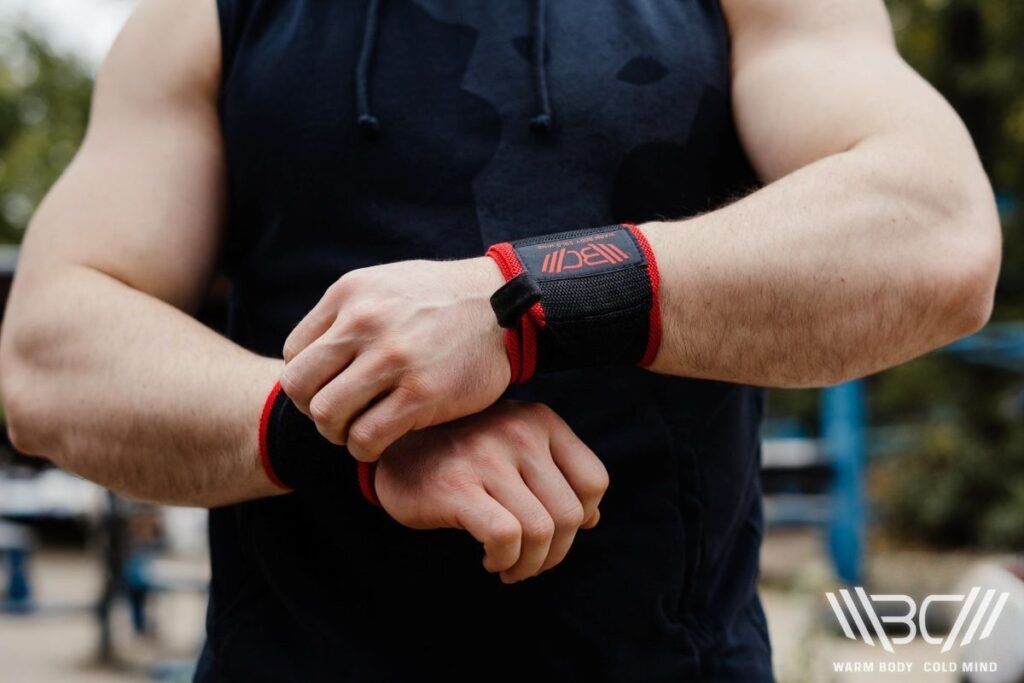
Many gym goers ask ‘do wrist wraps help deadlifts’, but it’s hard to give a short and simple answer! There’s no harm in using additional equipment in the gym, and I enjoy utilizing various technologies to help support me in reaching my goals. This doesn’t, however, mean that form can be forgotten about, in favor of putting all of your faith into deadlift wrist wraps or other equipment you may be trying out.
It’s no secret, harm can be done if compound and isolation movements aren’t performed correctly. The classic deadlift is no exception, with acute and overuse injuries occurring in powerlifters. So if you choose to use wrist wraps during deadlifts, be sure your form is still correct, and you’re engaging the muscles you should be – making that important mind-to-muscle connection.
When worn and used correctly, hand wraps for deadlifts can be a game-changer, allowing you to give your hands and wrists more support, while hitting numbers you’ve had your eye on for a while.
How Do Wrist Wraps Work?
Wrist wraps may initially seem like no big deal, and you may be asking yourself how such a subtle piece of gym equipment can transform your training. But hear me out! Using wrist wraps is simple, and once you’ve chosen a quality product that fits comfortably and works well, you’ll soon see how much it can benefit your sessions.
By taking the pressure away from your hands and wrists and aligning yourself securely over the bar, you can utilize all of the key muscles involved in a deadlift movement. The classic deadlift along with its variations is a popular resistance exercise for strengthening the lower body. With the help of wrist wraps, you can support yourself better through the movement, and help avoid strain or injury in your hands.

Secure your performance with our Velcro wrist wraps – the perfect blend of support and flexibility.
Do Wrist Wraps Help To Deadlift?
Our hands, wrists, and forearms go through a lot during the motion of a deadlift. Let’s take a conventional deadlift, for example. Whether you use a split or overhand grip on the bar, take a second to think about the pressure and strain going through your hands and wrists once you begin the lift.
Legs and back are the primary areas that power through the movement of a deadlift, but without decent grip and strong wrist strength, getting the bar off the floor would be significantly harder. This is where deadlifting wraps come in. By wrapping the material around your wrist, you can focus more on the lift itself and aren’t so restrained by fatigued wrists.
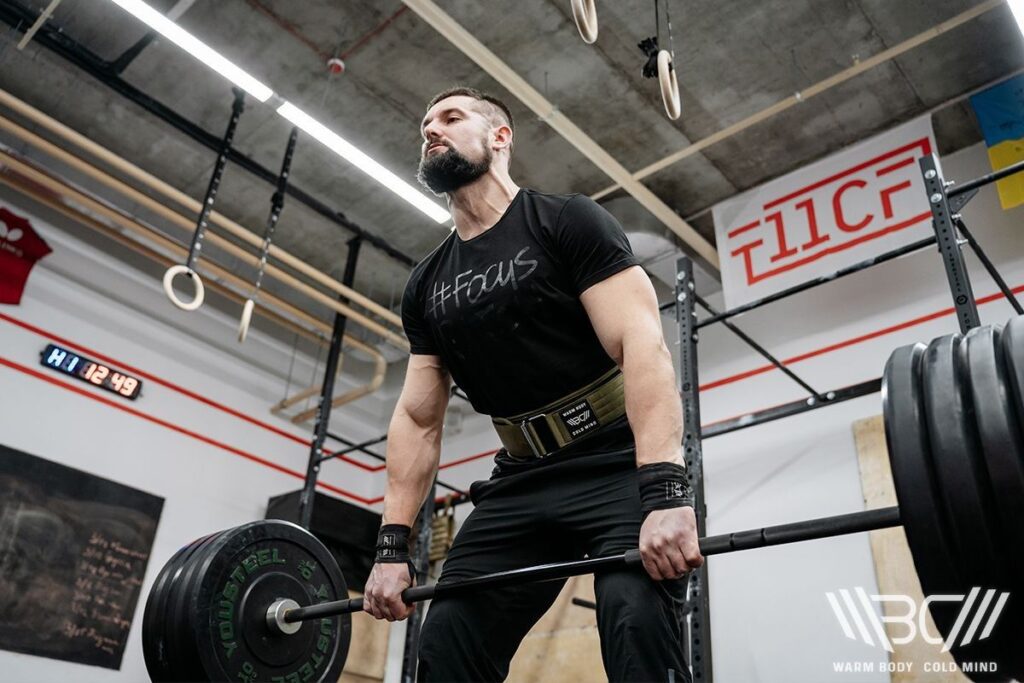
Can You Wear Wrist Wraps For Deadlifts?
When performing a conventional deadlift, or variation of the movement such as a sumo deadlift, it’s easy to focus on how your back, core, and lower body feel from the second the bar lifts off the floor, to the moment it’s dropped back down. Making the mind-to-muscle connection when lifting is essential to get the most out of any exercise, but smaller body parts can be quickly forgotten.
Wearing wrist wraps for deadlifts enables you to have additional support to aid in powering through the movement, and hopefully hitting some new PBs! I wouldn’t advise using wrist wraps or straps in every gym exercise as this can cause significant weakness in grip and wrist strength over time. It’s not a good idea to rely heavily on wraps to get you through each movement, but instead, utilize them on heavy days.
Although they have countless benefits, wrist wraps aren’t favored by everyone, with some asking the question; ‘are wrist wraps cheating?’. Provided the specific wrist wraps fit the given criteria, they are allowed in powerlifting and Functional fitness competitions. Straps on the other hand are a whole different story, but we’ll go more into detail about wrist wraps vs straps later on.
2 Benefits Of Using Wrist Wraps
We’ve already touched on how beneficial wrist wraps can be in terms of reducing the pressure going through the wrist, but let’s talk about the other ways they can help improve your gym sessions.
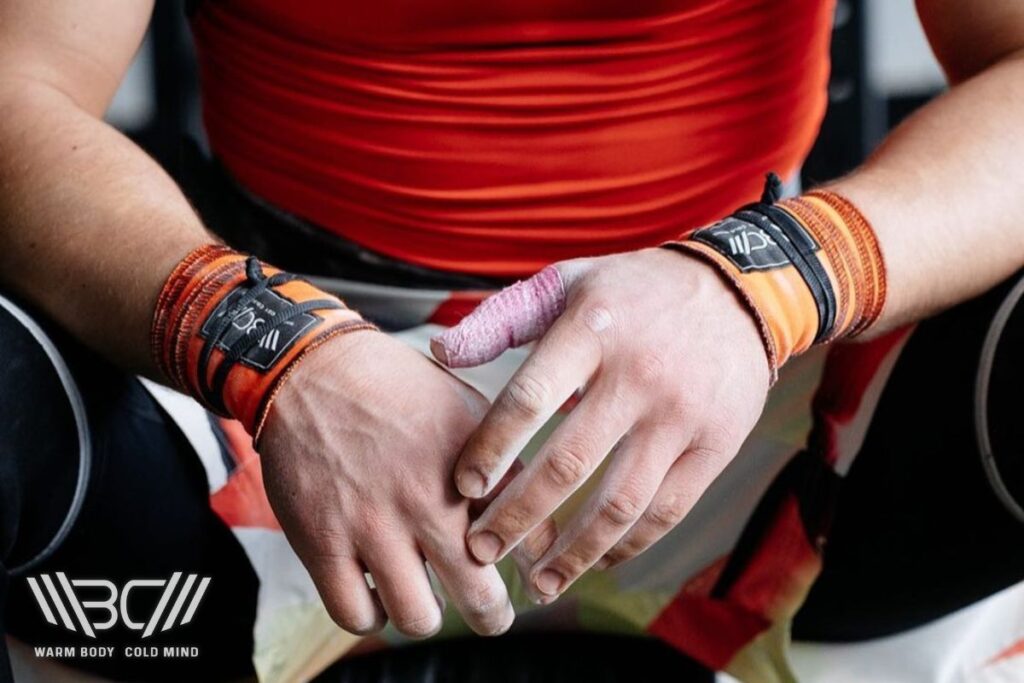
✅ Stabilization
One of the key parts of lifting well (and safely) is being stable from start to finish of each movement, regardless of whether the exercise is a squat, deadlift, or bench press. Feeling confident and secure through movements is vital when weight lifting and wrist wraps are fantastic to utilize in this way.
By providing additional stabilization to wrists, you can channel more energy through the movement, knowing your hands and wrists are better supported.

Cotton Weightlifting Wrist Wraps
Discover unparalleled wrist support with Warm Body Cold Mind cotton wrist wraps.
✅ Injury Prevention
No one likes having to take time away from the gym. As fun as it is to hit PBs and see progress each week, when an injury occurs, it’s time to take a step back to heal and recover.

Pro Tip:
I always say safety first, progress second, because without taking the precautions to complete movements safely, harm can be done which only causes pain and slows progress!
Wrist wraps are an awesome tool for helping prevent injury. They aren’t magic, so if you’re already experiencing pain in your hands or wrists, it’s best to get checked out by a health professional. If you’re simply looking for a quality piece of equipment to help support your joints through big movements, however, wrist wraps for deadlifts are a great tool to try out.
When To Consider Wearing Wrist Wraps To Deadlift?
Wearing wrist wraps in the gym isn’t a must, and, if you’re a newbie, it’s best to get used to exercises without using much aid at all. Allowing your hands to get used to the feeling of a bar, and letting your grip strength increase naturally will help with heavier lifts later on in your gym journey.
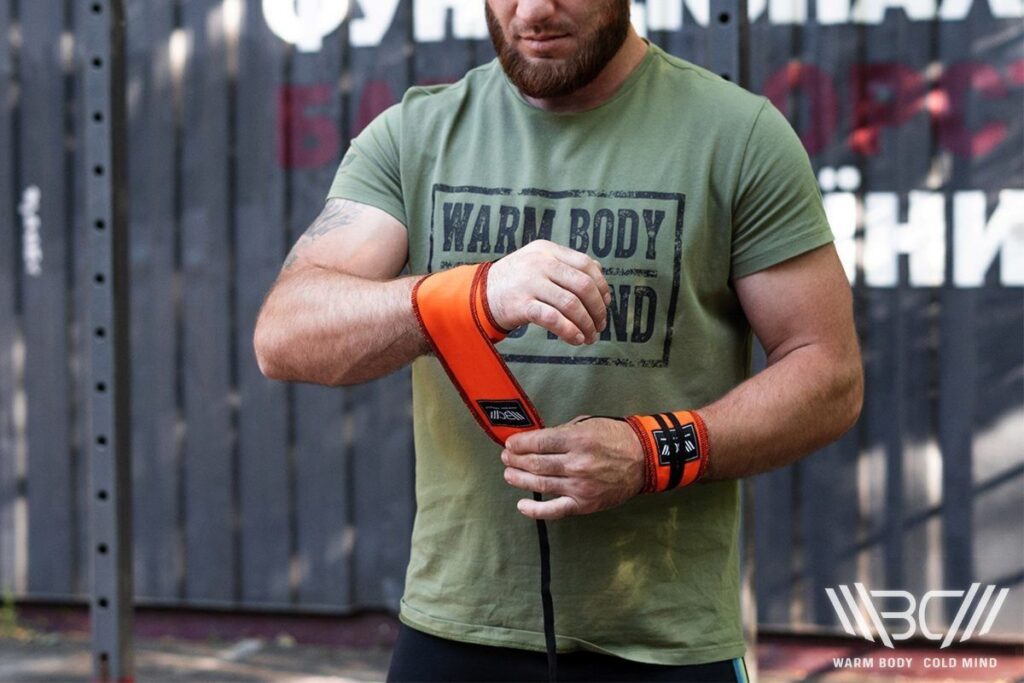
1. Max Load
When using wrist wraps for deadlifts, it isn’t necessary to use them through every single rep. Relying on wrist wraps too much can do more harm than good, as your body may adapt and come to rely on the wraps rather than your natural grip and strength. It’s wise to use deadlifting wraps on heavier loads unless advised by a trainer or professional, to allow your body to work through lighter weights without extra support.
2. Increased Comfort
Maybe you’re finding things a little uncomfortable when it comes to deadlifting and you want to make things smoother. Wrist wraps may be the answer you’ve been looking for. Investing in a set of quality wrist wraps can help increase the overall comfort of your hands and wrists when weight lifting. This means you can focus more on completing a deadlift safely with good form, and less on wrist or hand discomfort.
When You Don’t Need Wrist Wraps For Deadlifts?
Wrist wraps may seem like an obvious addition to your gym bag, but they aren’t necessary for everyone, especially not right at the beginning of a gym journey. As with most gym equipment, it’s wise to get familiar with movements and how your body feels before diving into heavy loads, as this can cause injury and reliance on equipment rather than your body.
1. Beginner Gym Goer
It’s unnecessary for beginner gym goers to wear wrist wraps, as it’s likely newbies won’t have experienced the movement of a deadlift. It’s best to initially focus on form before racking weight onto the bar. This helps prevent injury in the long run and instead gives individuals the time to familiarize themselves with the movement first.
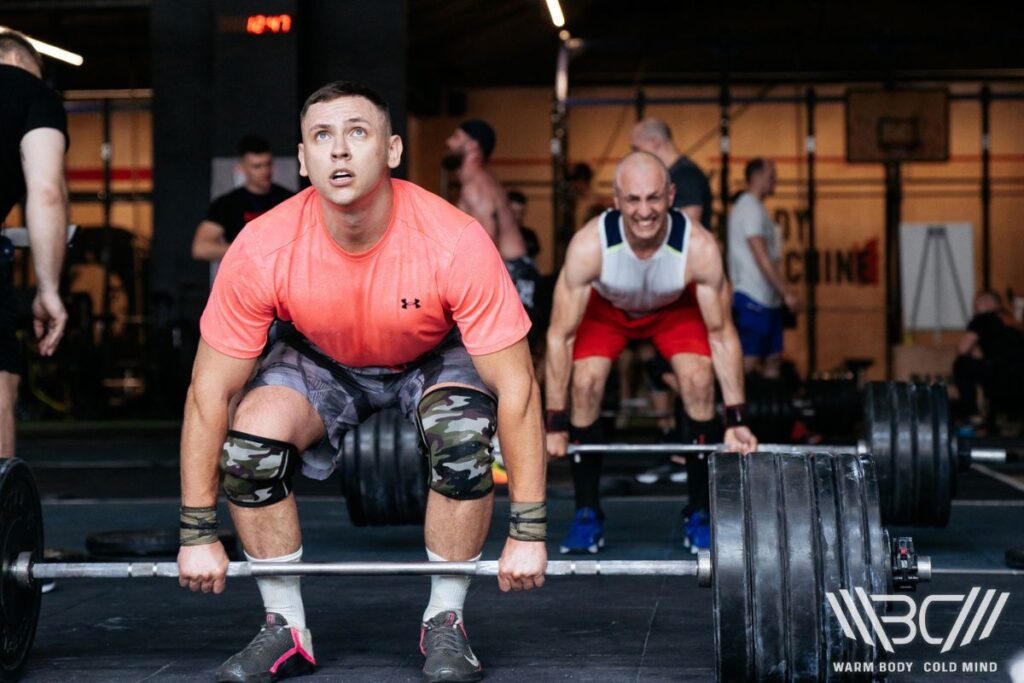
2. Not Testing 1RM or Training Heavily
Using wrist wraps during every single training session isn’t required. They can, instead, be of great use when completing a heavy session or testing a one rep max (1RM). Getting your body used to lifting without additional equipment is essential in building baseline strength. This can then be later enhanced and supported through wrist wraps and other equipment.
Subscribe!
The latest reviews of must-have home gym training equipment, apparel, and supplements that will enhance your performance and bring you new results.
How To Wear Wrist Wraps For Deadlift?
Getting to grips with new gym kit can be tricky, but thankfully, wrist wraps are simple to wear and use. It’s common to question how to use wrist wraps for deadlifts, and it’s vital to do so correctly. This means you’ll be giving your wrist the support, stability, and increased flexibility needed to complete the movement successfully.
1. Use On The Wrist
It may seem obvious, but the intended use of a wrist wrap is for the fabric to wrap around the wrist. This means it shouldn’t extend up onto the forearm, and it also shouldn’t be bulky and wrapped in between fingers or over your hand. Once you’ve put your thumb through the loop, take the wrap over your wrist, creating a secure layer of support.
2. Wrap Tightly
If you’re wondering how to tie wrist wraps for deadlifts, they need to be wrapped around the wrist securely and tight enough to provide the support you’re looking for. This will likely be tighter than wearing wraps for other exercises where the wrist needs a bigger range of motion.
Wrist Wraps We Recommend
Investing in quality gym equipment is essential for the most reliable kit and achieving the best results. Being able to trust the equipment you’re using to get you through even the heaviest of lifts is key to feeling confident and able in the gym – the same goes for wrist wraps.
Best Wrist Wraps For Deadlifts – Our Recommendations
Ideal for use with various training styles, our WBCM elastic velcro wrist wraps are a top option. Made from 100% cotton, these straps are not only durable but also comfortable to wear for both men and women. A simple but effective anchor system makes the wraps easy to put on, take off, and use throughout your training.
Designed and backed by the pros, our WBCM lifting wrist wraps are ideal for deadlifts, Olympic weightlifting, and more. With the ability to enhance each rep and support the wrist through movements, you can achieve your best performance with these trusted wraps.

Pro Tip:
Before hitting the gym with your new straps, take some time to familiarize yourself with how they feel, along with putting them on and taking them off. This means as soon as you walk through the gym doors, you can jump right in, feeling confident to wear your new wraps!
Wrist Wraps vs Straps: Are They The Same Thing?
| Wrist Wraps | Wrist Straps |
| Used to provide support and stabilization | Connects hand to bar to help lift heavier loads |
| Legal in most competitions | Illegal in most competitions |
| Suitable for use with a variety of movements and exercises | Used primarily in pulling exercises such as deadlifts, Olympic weightlifting snatches and cleans |
Wrist wraps and wrist straps are different kinds of equipment that often get confused with one another. They may be similar in name, but wrist wraps and straps have different uses.
Wrist wraps are predominantly used to provide additional support to the wrist joint, helping bring stabilization through each movement. Wrist straps, on the other hand, connect the hand to the bar, often enabling individuals to lift far heavier loads and potentially helping reduce knee flexion angle.
FAQ
What Length of Wrist Wraps Are Best for Deadlifts?
Wrist wraps generally come in a range of sizes from shorter wraps up to 18 inches, medium-sized wraps measuring up to 24 inches, and larger wraps exceeding this. The length of wrist wrap best suited to you will depend on the size of your wrist, in addition to the load you are planning on lifting.
How Much Do Wrist Wraps Increase Deadlift?
Wrist wraps alone aren’t key in increasing a deadlift. Their primary purpose isn’t to help people lift more but to provide additional support to the wrist, which in turn, may result in better lifting results.
Are Wrist Wraps Legal?
The use of wrist wraps is legal in most competitions, as unlike wrist straps, they don’t allow the individual to lift more than they are already capable of. Wrist wraps simply give extra support and stabilization, helping athletes achieve safe and consistent lifts.
Conclusion
Using wrist wraps for deadlifts can be helpful, particularly to those who are used to the gym and include deadlifts in their training plan already. By providing additional support and stability to the wrist, common weightlifting injuries can help be prevented, though a big part of this is wearing and using the wrist wraps correctly.
What are your thoughts on using wrist wraps for deadlifts? Have you introduced them to any training sessions recently? We’d love to hear your thoughts, so let us know in the comments!
References:
- Victor Bengtsson, Lars Berglund, Ulrika Aasa “Narrative review of injuries in powerlifting with special reference to their association to the squat, bench press and deadlift”, National Center For Biotechnology Information, https://www.ncbi.nlm.nih.gov/pmc/articles/PMC6059276/ (Accessed January 6, 2024)
- Kevin D. Camara, Jared W. Coburn, Dustin D. Dunnick, Lee E. Brown, Andrew J.Galpin, Pablo B. Costa “An examination of muscle activation and power characteristic while performing the deadlift exercise with straight and hexagonal barbells” Department of Kinesiology, Center for Sport Performance, California State University, https://hhd.fullerton.edu/knes/_resources/pdfs/bmep/Camara-%20An%20examination%20of.pdf (Accessed January 6, 2024)
- Isabel Martín-Fuentes, José M. Oliva-Lozano, José M. Muyor “Electromyographic activity in deadlift exercise and its variants. A systematic review”, National Center For Biotechnology Information, https://www.ncbi.nlm.nih.gov/pmc/articles/PMC7046193/ (Accessed January 6, 2024)
- Shirley S.M. Fong, Louisa M.Y.Chung, Yang Geo, Jeff Chak Wai Lee, Tak Ching Chang, Ada W.W.Ma “The influence of weightlifting belts and wrist straps on deadlift kinematics, time to complete a deadlift and rating of perceived exertion in male recreational weightlifters An observational study”, National Center For Biotechnology Information, https://www.ncbi.nlm.nih.gov/pmc/articles/PMC9282110/ (Accessed January 6, 2024)
- Amr Tawfik, Brian M Katt, Francis Sirch, Michael E Simon, Fortunato Padua, Daniel Fletcher, Pedro Beredjiklian, Michael Nakashian “A study on the Incidence of Hand or Wrist Injuries in Athletes”, National Center For Biotechnology Information, https://www.ncbi.nlm.nih.gov/pmc/articles/PMC8038891/ (Accessed January 6, 2024)
Author: Sergii Putsov
PhD in Sport Science, Olympic weightlifting, Strength & Conditioning coach and fitness expert
Sergii Putsov is a professional weightlifter with over 20 years of experience and multiple national medals. He was a member of the National weightlifting team, competing in the 94 kg weight class. Sergii holds a master’s degree in Olympic & Professional Sport Training and a Ph.D. in Sport Science. After his athletic career, Sergii transitioned into coaching and is now responsible for designing training programs, writing blog articles, providing live commentary for international weightlifting competitions, and hosting sport and fitness seminars worldwide.

